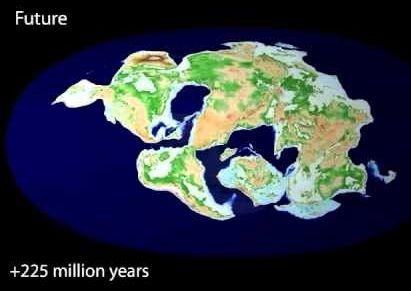Page 9722
Jun 13, 2018
Researchers reveal how disrupting gut-brain communication may affect learning and memory
Posted by Genevieve Klien in categories: biotech/medical, food, neuroscience
The connection between food and memory is one of those fundamentally human experiences we can all relate to. A compelling new study from the University of Southern California has revealed an intriguing explanation behind this phenomenon, and it illustrates how strongly the “second brain” in our gut communicates with our brain.
Inside our gastrointestinal tract lies a massive mesh of neurons often referred to as our “second brain.” While this neuronal control system primarily works to independently manage our digestive system, it also has been found to directly communicate with the brain via a long nerve, called the vagus nerve.
The vagus nerve has been found to mediate a great deal of metabolic communication between the gut and the brain. For example, one recent study revealed how feeding behavior, modulated by activity in the hippocampus, is directly activated by vagal nerve stimulation, mediated by signals from the gastrointestinal tract.
Jun 13, 2018
How the Earth’s continents will look 250 million years from now
Posted by Genevieve Klien in category: futurism

Speaking of Pangaea, this video shows how the present-day continents came to be formed from the Pangaea supercontinent about 240 million years ago, then shows what the Earth’s surface might look like 250 million years in the future, if the tectonic plates continue to move in predictable ways.
I hope this explanation is helpful. Of course all of this is scientific speculation, we will have to wait and see what happens, but this is my projection based on my understanding of the forces that drive plate motions and the history of past plate motions. Remember: “The past reveals patterns; Patterns inform process; Process permits prediction.”
Continue reading “How the Earth’s continents will look 250 million years from now” »
Jun 13, 2018
The Surprising Reason Why Neutron Stars Don’t All Collapse To Form Black Holes
Posted by Genevieve Klien in category: cosmology
Jun 13, 2018
What happens when the AI bubble bursts?
Posted by Genevieve Klien in category: robotics/AI
The experts are warning that an AI winter is coming, but what does that even mean? We examine the AI bubble to determine whether it’s time to worry.
Jun 13, 2018
Glass is the future of data storage
Posted by Shailesh Prasad in categories: computing, futurism
Jun 13, 2018
Lentils significantly reduce blood glucose levels, study reveals
Posted by Nicholi Avery in categories: biotech/medical, food, health
Replacing potatoes or rice with pulses can lower your blood glucose levels by more than 20 per cent, according to a first-ever University of Guelph study.
Prof. Alison Duncan, Department of Human Health and Nutritional Sciences, and Dan Ramdath of Agriculture and Agri-Food Canada, found that swapping out half of a portion of these starchy side dishes for lentils can significantly improve your body’s response to the carbohydrates.
Replacing half a serving of rice with lentils caused blood glucose to drop by up to 20 per cent. Replacing potatoes with lentils led to a 35-per-cent drop.
Continue reading “Lentils significantly reduce blood glucose levels, study reveals” »

These turbines can harness the wind generated by passing busses to generate energy…
Updated: ENLIL has corrected the statement saying “300 turbines will power 20,000 homes” is incorrect. The startup elaborated on the topic, saying tests are promising and still underway.
Jun 13, 2018
DigiLens is Developing a Waveguide Display for 150 Degree XR Headsets
Posted by Klaus Baldauf in categories: augmented reality, virtual reality, wearables
DigiLens, a developer of transparent waveguide display technology, says it’s working toward a waveguide display which could bring a 150 degree field of view to AR and VR (or XR) headsets. The company expects the display will be available in 2019.
Founded in 2005, DigiLens has developed a proprietary waveguide manufacturing process which allows the company to “print” light manipulating structures (Bragg gratings) into a thin and transparent material wherein light can be guided along the optic and be made to project perpendicularly, forming an image in the user’s eye. While DigiLens isn’t the only company which makes waveguide displays, they claim that their process offers a steep cost advantage compared to competitors. The company says they’ve raised $35 million between its Series A and B investment rounds.
While DigiLens’ displays have primarily been used in HUD-like applications, the company is increasingly positioning its wares toward the growing wearable, AR, and VR industries. At AWE 2018 last week, DigiLens Founder & CTO Jonathan Waldern told me that the company expects to offer a waveguide display suitable for AR and VR headsets which could offer a 150 degree field of view between both eyes. He said that a single display could be suitable for AR and VR modes in the same headset by utilizing a liquid crystal blackout layer which can switch between transparent and opaque, something which DigiLens partner Panasonic has developed. A clip-on light blocker or other type of tinting film ought to be suitable as well.
Continue reading “DigiLens is Developing a Waveguide Display for 150 Degree XR Headsets” »















